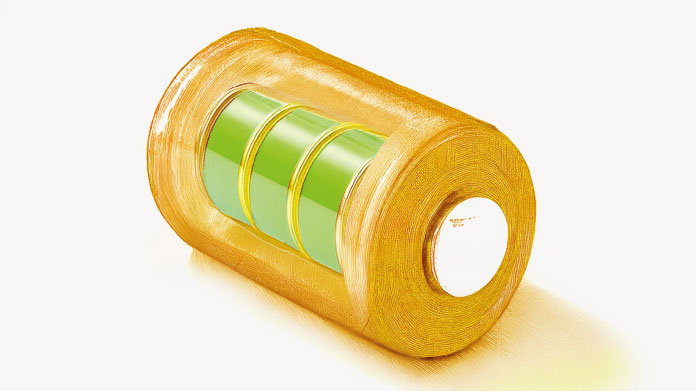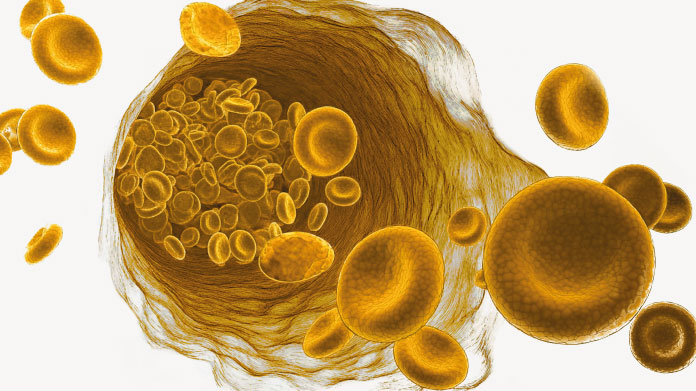
Algae: a few general facts
Algae are a large group of plant organisms that are found growing on the sea bed, on our coastlines, and in fresh water.
There are green, red, brown and even micro-algae: in fact, science has not yet identified every type of algae nor uncovered all the mysteries of this particular plant kingdom. They are, however, the subject of increasing research because of their potential benefits for human health.
Spirulina – a type of microalgae and antioxidant superfood
The microalgae spirulina is easily recognised by its bright blue-green colour. Its high content of vitamins, minerals, carotenoids and essential fatty acids has earned it the moniker ‘superfood’.
Spirulina is a source of antioxidants and helps regulate blood sugar levels. It may also boost the body’s natural defences and maintain energy and tone. In addition, its protein content is particularly valuable for vegetarians and vegans. (1)
You can find it in powder form (though its strong taste will not be to everyone’s liking), or in tablet form (for example, in the supplement Spirulina).
Chlorella, invaluable for eliminating toxins
Chlorella is a type of green microalgae which also boasts a nutrient-rich composition. With various amino acids, vitamins A, C and B3, iron and polysaccharides, chlorella is a veritable treasure trove of nutrients.
We know that this purifying algae can absorb and eliminate toxins. A number of studies have shown that it may also help support the body’s defences, boost vitality and maintain healthy gut function (2).
Nutritionally beneficial for the body, chlorella is definitely an important health ally (try, for example, the supplement Chlorella).
Laminaria Japonica or kombu: rich in iodine and fucans
The algae Laminaria Japonica is probably better known as kombu. It contains a large amount of mineral salts and trace elements.
Kombu is also rich in polysaccharides called fucans, which some researchers believe have antioxidant properties (3-6). It’s also thought to help purify the body.
Laminaria Japonicapowder form to liven up your everyday cooking.
The many virtues of Ascophyllum Nodosum or bladder wrack
Bladder wrack, or Ascophyllum, is abundantly harvested from the coastlines of Europe. Green when in water, it darkens on contact with the air. Also rich in fucans, bladder wrack may help support intestinal health, weight loss (alongside dietary interventions) and hydration of the skin.
Ascophyllum also provides a significant amount of iodine, but without increasing salt intake. Iodine is, of course, a key trace element which supports healthy nervous system and thyroid function, and helps maintain good physical and mental energy. (8)
For a supplement with bladder wrack, you could try Fat & Carb Blocker or Natural Iodine, both of which contain different extracts of this algae.
Ecklonia, a type of brown algae packed with antioxidant polyphenols
Perhaps the least known of thebrown algae, ecklonia is nonetheless packed with amazing marine polyphenols called phlorotannins.
These compounds are exceptional antioxidants, which help protect cells against oxidative-stress induced damage (9).
It’s because of this powerful action at a cellular level that ecklonia features among the algae available in supplement form.
AFA: a beneficial blue algae rich in PEA, B12, molybdenum...
Aphanizomenon flos-aqua, or AFA, is reputed to be the most beneficial of all the blue algae. It contains PEA (phenylethylamine), an aromatic compound thought to stimulate neurotransmission and promote positive mood.
AFA also provides vitamins (53% of the recommended daily amount (RDA) for vitamin A, up to 750% of that for vitamin B12...), minerals, amino acids and fatty acids. Remember that vitamin B12 helps to maintain psychological function and reduce fatigue (10).
This algae also contains a significant level of molybdenum (37% of the RDA), a mineral that supports normal metabolism of sulphur-containing amino acids. If you’d like to benefit from AFA’s many properties, then try the excellent supplement AFA Extract.
References
- Khan Z, Bhadouria P, Bisen PS. Potentiel nutritionnel et thérapeutique de la spiruline. Curr Pharm Biotechnol. 2005; 6 (5): 373-379.
- Mason, Russ. (2001). Chlorelle et spiruline: suppléments verts pour équilibrer le corps. Alternative and complementary therapies. 7. 161-165.
- Jing Wang, Quanbin Zhang, Zhongshan Zhang, Zhien Li, Activité antioxydante des fractions de polysaccharides sulfatés extraites de Laminaria japonica, International Journal of Biological Macromolecules, Volume 42, Numéro 2, 2008, Pages 127-132
- L'extrait de Yang HS, Haj FG, Lee M, Kang I, Zhang G, Lee Y.Laminaria japonica améliore la fonction de barrière intestinale en modifiant la réponse inflammatoire et les protéines liées à la jonction serrée dans les cellules Caco-2 stimulées par les lipopolysaccharides. Nutrients. Mai 2019; 11 (5)
- Miyuki Shirosaki, Tomoyuki Koyama, Chapter 15 - Laminaria japonica en tant qu’aliment dans la prévention de l’obésité et du diabète. Advances in Food and Nutrition Research, Academic Press, Volume 64, 2011, Pages 199- 212
- Park, H., Kim, I., Kim, J., et Nam, T. (2013). Induction de l'apoptose et la régulation de la signalisation ErbB par la laminarine dans les cellules cancéreuses du côlon humain HT-29. International Journal of moleculary medicine, 32, 291-295.
- Gammone MA., D'Orazio N. (2015) Activité anti-obésité de la fucoxanthine caroténoïde marine. Marine Drugs.
- Derosa G. et al. (2019) Ascophyllum nodosum et Fucus vesiculosus sur l'état glycémique et sur les marqueurs d'endommagement endothélial chez les patients dysglicémiques. Phytother. Res.
- Wijesekara, I., Yoon, N.Y.et Kim, S.‐K. (2010), Phlorotannins tirés d’Ecklonia cava (Phaeophyceae): Activités biologiques et bénéfices potentiels pour la santé. BioFactors, 36: 408-414.
- https://www.anses.fr/fr/system/files/NUT2003sa0002.pdf
64 Days
Very happy with the order and the…
Very happy with the order and the prompt team's response to an identified issue with my order.
KUQI Fatmir
71 Days
15 + years as a customer
I have been using their products for over 15 years as I find both the quality and pricing excellent.
Del Chandler
73 Days
Good quick delivery
Good quick delivery
Timothy O Shea
74 Days
Good service
Good communication following order. Product came within the time frame and was well packaged. The only confusing thing I found was in checking out. For some reason it is not clear how to do so and the current system should be improved.
Joe O Leary
83 Days
Simple and fast.
Simple and fast.
Nina
84 Days
Great product was definitely what is…
Great product was definitely what is says and arrived on without issue
customer
90 Days
I love reading those product facts on…
I love reading those product facts on Supersmart.com. Effective health products making permanent changes to my blood-work results and testes. However, I also have to order capsules from other websites.
NORDGULEN Olav
92 Days
Great products
Great products Very easy to choose, to order… and to get at home
Federica mastrojanni
95 Days
Service rapide et bons produits
Service rapide et bons produits
customer
96 Days
Good products and fast delivery
Good products and fast delivery
Trusted
101 Days
Does what it says on the can
I believe in this product Made to highest standard The ordering process is straightforward Delivery time prompt Excellent product, excellent service Happy customer ❤️
Sheba Kelleher
106 Days
Excellents produits
Excellents produits. Rien à dire si ce n'est qu'ils sont très chèrs.
MJS_France
108 Days
Very good supplement
Very good supplement
Glaveash
109 Days
Supersmart supplements are really…effective
Supersmart supplements are really effective and have helped me and family members and friends to improve their health including some of us with severe health problems including some with no existing medical treatment.
Anne Georget
110 Days
SuperBig Supersmart
SuperBig Supersmart
Pierre



